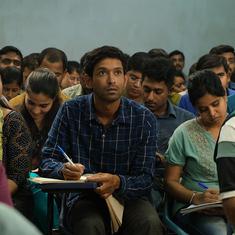When the tarpaulin she was sleeping under started rustling furiously in the darkness, Mustaba Khatun thought it was thieves cutting their way into her shelter on the edges of Bangladesh’s Kutupalong-Balukhali refugee camp, where the city of bamboo and plastic meets the forest.
“We thought someone had come to take our supplies so we rushed outside and that’s when we saw the elephant. Then it charged at us,” she recalled of the night in September 2017, only weeks after she fled a Myanmar military operation that killed an estimated 6,700 Rohingya Muslims.
A child and an adult were killed in that nocturnal chaos, and the community was left with a new fear to live with after a harrowing escape from alleged “systematic killings and rape.” One of Khatun’s neighbors, his own leg still bandaged from falling over as he bolted from the scene, keeps a grisly photo of the aftermath on his phone. Soon afterward, the child’s mourning family decided to move deeper into the camp. Those remaining on the edges formed night watches, monitoring the hills and rallying the neighbours to chase away any elephants that wandered in.

But these community responses, which can instantly draw out thousands in a camp of almost 600,000 people, could be part of the reason why 12 people have been killed, according to the International Union for Conservation of Nature, which has now teamed up with the UN’s refugee agency, the UNHCR, to formally train special response teams.
Shaky video shot during an incident in February shows terrified refugees scrambling down the camp’s naked hills and throwing sticks and stones at an elephant that ends up flattening several shelters in its confusion. This frenzied response, said IUCN local coordinator Mohammed Abdul Motaleb, illustrates why the refugees need help understanding elephant behavior.
“Basically they throw stones and firecrackers, which is really bad for the elephants...and the elephants attacked people because they don’t like this kind of chaos,” he said.
“Elephants are like human beings, they always prefer quieter places and that’s why they always come at night. They have fixed routes that people never go to, which helps them to move freely.” The problem, he said, was that the sprawling refugee camp now falls across those elephant corridors.

Protecting the community
“I am ready. I promise to protect my community,” barked the first of the Rohingya refugees to stand up and make his pledge to serve in localized elephant response teams.
“Inshallah” – god willing – came the response from the 19 other men sitting crossed-legged on the floor of a bamboo-framed meeting room, all proudly wearing blue T-shirts marked with an elephant logo unmistakably identifying their new responsibilities.
The training was simple: presentations on the history and character of the Asian elephant (Elephas maximus), designed to increase their respect for the animal; some team-building exercises; and a mock elephant incursion with three of the trainees on their knees, lurching at their friends, while the others imitated guiding the elephants away and keeping back onlookers.
One of the Rohingya responders, Abdul Lateef, said he had seen 14 elephants since arriving in Bangladesh and had to improvise ways to chase some of them away.
“We didn’t know what to do,” he said. “Everyone was shouting and running in every direction, falling over each [other].”
After two or three incidents, they realised they needed to organise themselves. Each night, volunteers would sit by their tents, fixing their eyes on the unlit hills from which the elephants usually slipped in, raising the alarm when they spotted something.
“We didn’t have lights or sticks with us, we were just shouting, creating noise to drive them away,” Abdul Lateef said.
Motaleb’s team has given the trainees flashlights, spotlights and whistles. Other programmes in Bangladesh have proven these simple tools are enough to protect humans without harming the endangered animals, he said.
Motaleb said the key to training the elephant response teams was in teaching them to control the crowds and to ensure that groups of no more than 10 people were responsible for protecting the elephants and guiding them away from the camp. In the past, he said, the refugees would surround the elephants on all sides, aggravating them and leaving them no way to escape – and that’s when they would lash out.

A wider environmental crisis
The first of the human-elephant clashes happened in September 2017, just weeks after the first refugees began pouring into Bangladesh and exhausted and traumatised new arrivals took shelter wherever they found space. But they have not let up as the main Kutupalong-Balukhali camp, which has existed since a previous Rohingya influx in 1991, grew into the world’s largest refugee settlement. Motaleb warned more problems lay ahead during the imminent monsoon season, when elephants traditionally migrate.
An IUCN survey prompted by the refugee crisis, which studied elephant footprints and dung, estimated up to 45 elephants live in the area. They had been able to freely move along corridors between Bangladesh and Myanmar in search of food and shelter – until hundreds of thousands of new people arrived in the area.
Unlike the host community, who the new arrivals said warned them about the elephant presence, the refugees struggle to avoid the elephant paths because of the limited space given to them to settle in. That clash has only been heightened by the rapid deforestation caused by the crisis.

An estimated 20 square kilometers (7.8 square miles) of forest have been cleared to make space for the new settlements and by refugees needing to make almost daily excursions for firewood in the absence of any alternative fuel. The muddy, winding route they take into the forest becomes longer each day, constantly increasing the tension between them and the environment. At one of the stopping points, a group of children hauling heavy loads of firewood on their shoulders told Mongabay they had run into elephants before – and just like in the camp, tried to scare them away by shouting and throwing stones.
And as that thick forest has rapidly retreated, it has been replaced by a now barren, washed-out landscape of crumbling, pale-brown hills stripped of all vegetation and even their roots. That newly emptied space has also increased the entry points for the elephants, who in recent months have been scavenging for food during the dry season. This is where the IUCN plans to build 56 watchtowers to monitor elephant activity.

UNHCR spokesperson Caroline Gluck said some of the more recent video of panicked elephants stampeding through the camp convinced them of the issue’s urgency, but this is just part of a longer-term plan to start dealing with the dramatic environmental changes caused by the crisis.
“The camp itself is not environmentally friendly,” she said. “It’s below international standards by any measure. The numbers of people there exceed the numbers of people who should be there.”
Work is currently focused on preparing for a potentially disastrous monsoon season because of the surge of people into the area. Gluck said they would also be working on providing alternative fuels to end the firewood crisis, providing new water supplies, and running a reforestation program to start reversing some of the damage that has been done.
“We want to work on creating a better environmental awareness, both among the refugees and the host community, to try and better preserve the fragile environment that they have at the moment,” she said.
This article first appeared on Mongabay.










